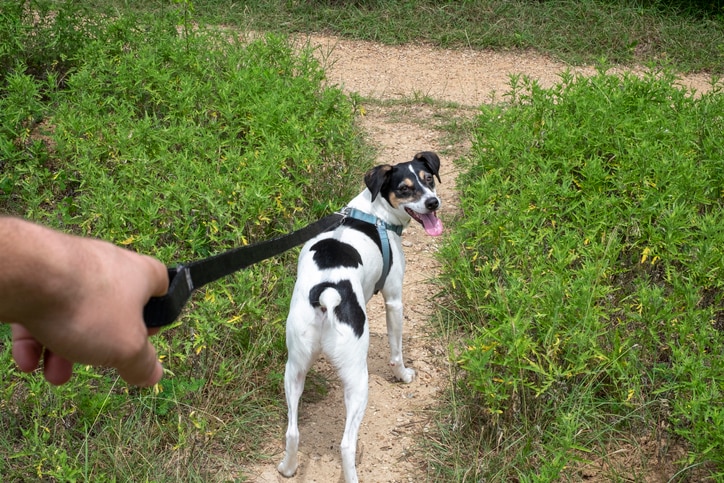
How to Write a Great Personal Assistant Resume
Personal assistants accomplish routine personal or professional tasks — like setting up appointments or managing a household — so their employer is freed up to do other things. Unlike an office manager or administrative assistant, personal assistants typically work for just one person. Depending on who they’re assisting, the personal assistant’s duties can include serving as an event planner, office assistant, personal shopper, and project manager rolled into one. For that reason, what employers look for when they hire a personal assistant will depend a lot on their individual situation. You’ll want to read the job description carefully, and look for places where you can emphasize the ways in which your past experience coincides with the specific duties the employer is looking for. But there are a few key components that every personal assistant’s resume should include — namely, your contact information, a summary statement, work experience, education, and skills.
Personal Assistant Resume Contact Information
Your contact information will likely be the first thing the hiring manager sees, so it’s important to make a good impression. The primary purpose of this section is to let potential employers know how to reach an applicant for an interview, but it can also direct them to see more information or skills not included on your resume, such as via a personal website.
What to Include:
-
full name
-
mailing address
-
phone number
-
email address
-
personal website and/or LinkedIn page
-
links to social media pages (if applicable)
Place the information at the top of every page of your resume to make sure hiring managers have no trouble finding it, and use easy-to-read text (no frilly typefaces or tiny font sizes). You should proofread your entire resume, but take extra care to look over your contact information to make sure there are no errors. A mistyped number can make it impossible for an employer to reach you—and a mistake like that will almost certainly be a deal-breaker for a personal assistant position.
Summary Statement for Personal Assistants
Also referred to as a “professional profile” or “summary of qualifications,” this section has garnered some heated debate in the resume-writing world, but many experts agree it’s a must-have — especially for those whose most recent work experience might not perfectly align with the job posting. Studies show that recruiters spend an average of only 6 seconds looking at any given resume, so you’ll want to grab their attention as quickly as possible — and hold it. A summary, right beneath your contact information, makes it easier for the employer to see, at a glance, why a candidate is qualified for the position. Think of it as your elevator pitch. You only have a few seconds to convince someone to hire you — what do they need to know?
What to Include:
-
Write 3-5 brief sentences (either in bullet points or a paragraph) that highlight important parts of your experience or skill set that are — and this is key — directly related to the job you’re applying for. Read the job listing carefully to identify keywords, and try to work those into your summary statement.
-
In addition to relevant experience and skills, be sure to include one or two noteworthy accomplishments that you expect to achieve in the new position, too.
Resume Experience for Personal Assistants
This section supports your summary statement by elaborating on what you’ve done and why it matters for this particular job listing. This is the meat-and-potatoes portion of your resume, where you show the potential employer what you’ve accomplished over the course of your career and what you might be able to bring to the table as their new personal assistant. Just like the summary statement, you’ll want to tailor this section to include things relevant to the new position, but there are several key things that all experience sections should include.
What to Include:
-
Companies or organizations where you’ve worked and their locations
-
Positions you’ve held and the time period you held them
-
2-5 specific, relevant responsibilities and accomplishments in a bulleted list for each role or company. Each bullet point should start with a strong action verb. (Ex. Increased, Conducted, Provided, etc.)
Your resume isn’t meant to be an exhaustive list of all the work you’ve ever done. You might not include every task you did in every position — or even every job you’ve ever held. The experience section is meant to give only a snapshot of what you did in past positions to make you qualified for the job you’re applying for now. Listing all of your responsibilities or accomplishments forces your potential employer to sift through a ton of information just to find what they want to know. Include only your strongest, most relevant tasks and achievements, taking care to point out ways your work helped the individual or company. Did you complete a project under budget? Did your work lead to an increase in attendance at annual event? Whenever possible, add a number figure to backup your claim. Ex. “Increased the author’s Twitter following by 10 percent in a single year.”
It’s also important to note that your “experience” doesn’t have to be only paid, full-time employment — part-time jobs, internships, and even volunteer work can all be included if your work in these positions was relevant to the job you’re applying for. Likewise, it’s OK if some of your past job titles seem unrelated to the field you’re trying to break into, as long as you can show that the experience you gained there can be applied to the new position. That being said, if something is a total mismatch, it’s all right to leave it out completely or group similar positions together. Ex. “Additional positions included waitressing and food service jobs at Company A (Year-Year), Company B (Year-Year), and Company C (Year-Year).”
Organization
The most common way to list work history is chronologically, starting with the most recent positions held and going back in time from there. Employers tend to like this format because it gives them a glimpse at someone’s career progression and because (frankly) they’re most familiar with it.
However, a chronological resume isn’t the only option. If you’re changing careers or have long gaps in your work history, you might want to opt instead to use a less traditional format, like a functional resume. In a functional resume, you would still mention relevant accomplishments and incorporate keywords, but your experience is grouped by theme instead of position (Ex. “Project Management Experience” or “Customer Service Experience”), with only the bare bones of your work history listed in a separate section as bullet points below without any further description Ex. “Project Manager, Company A, 2010-2012.”
Education Requirements for Personal Assistants
The education portion of your resume is your chance to showcase specialized or advanced training. For most employers, experience matters more than education, but it can still be helpful to include even if a job posting doesn’t mention a specific degree because it can help set you apart from the competition.
What to Include:
-
Starting with your most recent degree, list each degree earned and the year you earned it (or the month and year you expect to earn it.)
-
Name of school and its location
-
Major/minor fields or emphases (if relevant to the position)
-
GPA (if over 3.0, and you recently graduated or are about to graduate)
Alternative Descriptions
This section lends itself well to straightforward degrees like a bachelor’s or associate’s, but that’s not the only way to highlight advanced training. If you attended college but never finished, for example, you can still list that on your resume. Simply exclude the degree section, and replace it with the number of credits you earned while attending. Ex. “University Name, 2010-2012, Collegetown, WA, completed 22 credits.” Similarly, if you don’t have a lot of direct experience for the job you’re applying to but have taken relevant college courses, you can include those courses in the education section under the heading “related coursework.” Just be sure to list no more than 3-5 courses. All that to say, unless education is specifically mentioned in the job posting, you don’t have to include it. If you think your education could hurt your chances of getting hired, omit it, and use the space instead to highlight your experience or special skills.
Note: Unless you are currently in high school or the job position explicitly mentions applicants have a high school diploma, you shouldn’t include it on your resume — especially if you already have higher degrees or some college experience you could include instead.
Placement
While not a hard-and-fast rule, applicants with five or more years of experience should list their education after their work experience, whereas recent grads or those with little experience should list education before their work history — the point being to put whatever makes you look better at the top.
Examples of Personal Assistant Skills
The skills list — sometimes listed as “qualifications”— is a great place to highlight relevant abilities you’ve developed over the course of your career that aren’t specifically mentioned elsewhere on your resume. These include both “hard” skills — like knowing a software program or second language — and “soft” skills that are harder to quantify, such as verbal and written communication or time management skills. Like your summary of qualifications and experience, this section should be custom-tailored to each position you apply for by using keywords from the job description. For example, if a posting mentions managing calendars, be sure to include any calendar software programs you are familiar with, such as Microsoft Outlook or Google Calendar.
What to Include:
-
Accounting skills Ex. “budgeting, purchasing, reconciliation, sourcing”
-
Administrative skills Ex. “arranging travel, correspondence, event planning, filing, maintaining schedules, note-taking, office management, scheduling”
-
Communication skills, including any second languages spoken and/or written Ex. “conversational in Spanish both written and spoken, managing inquiries, proofreading”
-
Personal skills Ex. “discretion, flexibility, multi-tasking, organization, team management, working independently”
-
Technology skills, especially knowledge of specific computer software programs Ex. “Microsoft Office 365 Suite, dashboard creation, database management, presentation preparation, report drafting”
It should be noted that whatever skills you list don’t have to come from only paid, professional positions you’ve held. Many valuable skills can be developed during school projects, volunteer positions, and even managing your own home.
General Tips for Personal Assistant Resumes
Proofread, proofread, proofread. Read through every line, taking extra care to check for misspellings, incorrect word usage (Ex. their, there, they’re), and typos, as well as spellings and locations of the companies/programs you mention. Personal assistants are often responsible for paying extra attention to detail, so errors in your resume could signal to the hiring manager that you aren’t up to the task.
Prioritize clarity over aesthetics. It can be tempting to add frilly fonts, borders, or other artistic flourishes, but unless graphic design or visual creativity is part of the job description, you might want to keep it simple. Use easy-to-read fonts like Times New Roman or Calibri at a standard size (10-12 point font), and make headers — like “education” and “experience” — bold and/or slightly larger to make them easy to find.
Resumes aren’t the place to be modest. If you really feel like you were the driving force behind a particular accomplishment, feel free to include it. If you think something was more of a team effort, avoid using phrases like “helped accomplish,” and instead, focus on what you did personally and how it contributed to a positive outcome.
Be specific and concise. Avoid using overly broad or generic phrases or jargon with your descriptions. For example, “Planned an international summit for 50+ delegates, including arranging travel and accommodations for all attendees” is a lot stronger than “Organized events and made travel arrangements.” Likewise, only include information that is relevant to the position on one to two pages maximum. Even applicants with decades of experience can pare down their resume to a single page by being highly selective about what they include and ensuring everything on the page is directly relevant to the job posting. If you feel like there is much more you’d like to highlight, you can always include it in on your personal website or LinkedIn page, which you can provide in your contact information.
Personal Assistant Resume Template
(Click here to download this Personal Assistant Resume template as a pdf.)
Sarah Jones
123 Privet Drive, Springfield, WA 40069 | 555-555-5555
email@email.com | linkedin.com/sarahjones
Summary of Qualifications
-
Exceptionally organized personal assistant with 5+ years’ experience in both private and corporate sectors
-
Detail-oriented, self-motivated professional with demonstrated ability to learn on the go, multitask, and meet ambitious deadlines
-
IAAP certified and skilled in QuickBooks, Microsoft Office 365, and Dropbox
Experience
Personal Assistant, 2017 – present
Person A | Springfield, WA
-
Schedule all personal and professional meetings, and remind executive of upcoming appointments
-
Manage confidential documents and correspondence with discretion, including those related to medical appointments and procedures
-
Input and organize contact information of more than 500+ personal and professional contacts
-
Designed an innovative file management system for both personal and business documents that saves the client valuable time every week
Office Manager, 2015 – 2017
Company A | Springfield, WA
-
Reviewed expenses and negotiated with vendors to save the client more than $3,000 in overcharges and unnecessary spending in fiscal year 2017
-
Identified and purchased materials to restock office supplies
Administrative Assistant, 2012 – 2015
Company B | Springfield, WA
-
Planned all company events, including facilitating vendor selection and negotiation, purchasing, and invitations
-
Created presentations for executives in Microsoft PowerPoint
-
Arranged travel and accommodations for executives, including transportation to and from the airport
Education
Bachelor of Arts — English, 2012
Springfield College, Springfield, WA
Special Skills
-
IAAP certified
-
Skilled in Microsoft Office 365, QuickBooks, Dropbox
-
Fluent in Spanish, both written and spoken
-
Excellent time-management skills
-
Able to swiftly and accurately take notes during meetings





